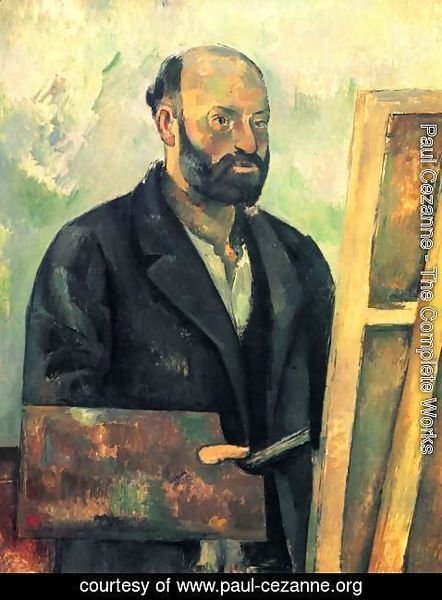Paul Cézanne-22 October 1906:
Paul Cézanne ( 19 January 1839 – 22 October 1906) was a French artist and Post-Impressionist painter whose work laid the foundations of the transition from the 19th-century conception of artistic endeavour to a new and radically different world of art in the 20th century. Cézanne is said to have formed the bridge between late 19th-century Impressionism and the early 20th century's new line of artistic enquiry, Cubism.

While his early works are still influenced by Romanticism – such as the murals in the Jas de Bouffan country house – and Realism, he arrived at a new pictorial language through intensive examination of Impressionist forms of expression. He gave up the use of perspective and broke with the established rules of Academic Art and strived for a renewal of traditional design methods on the basis of the impressionistic color space and color modulation principles. Cézanne's often repetitive, exploratory brushstrokes are highly characteristic and clearly recognizable. He used planes of colour and small brushstrokes that build up to form complex fields. The paintings convey Cézanne's intense study of his subjects. Both Matisse and Picasso are said to have remarked that Cézanne "is the father of us all".
His painting provoked incomprehension and ridicule in contemporary art criticism. Until the late 1890s it was mainly fellow artists such as Pissarro and the art dealer and gallery owner Ambroise Vollard who discovered Cézanne's work and were among the first to buy his paintings. In 1895 Vollard opened the first solo exhibition in his Paris gallery, which led to a broader examination of the artist's work.
The outstanding feature of Cézanne's late works is the increasing "dematerialization" of objects in them. Unlike the early works, the objects are distorted and collapse and are unable to maintain their convergence based on the designs created by their "maps" - the title that Cézanne himself gave to his pen strokes - based on the relative absence of pattern and the lack of geometric and color perspective. The artwork in front of us, for a moment, appears completely abstract and like a two-dimensional space. But then, magically, things take shape and reappear. But their durability is fragile (and therefore, very valuable); They keep threatening to hide again.
Julian Young
Heidegger's philosophy of art
Cézanne is the peak and end of the Impressionist movement. After him, there was an explosion and the components of the synthesis of Impressionism - color, line, volume - were spread on the paintings of Fauvists, Cubists and Futurists. For this reason, Cézanne is considered the most important figure in the history of modern painting in many ways. Cézanne tries to look beyond the appearance and surface of nature and see the "structure" of things. In other words, Cézanne is in search of those final and fundamental abstracts that shape the face and internal structure of things, and the apparent formlessness and chaos of the visible world relies on it. Cézanne tries to reach their eternal example beyond minor objects.
Najaf Daryabandari
From the introduction to the translation of "The Old Man and the Sea", by Ernest Hemingway


